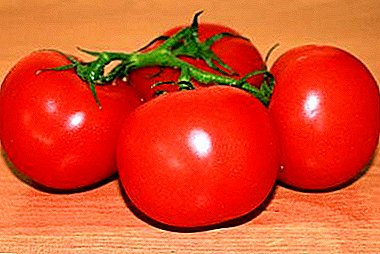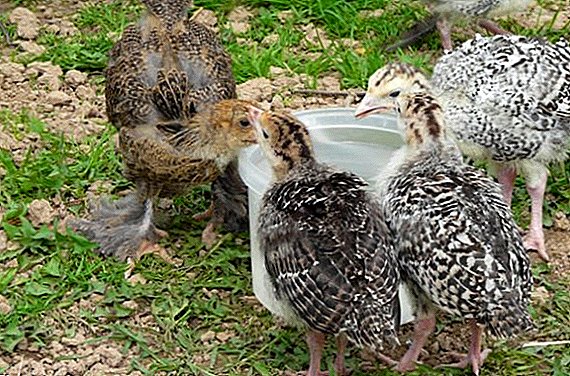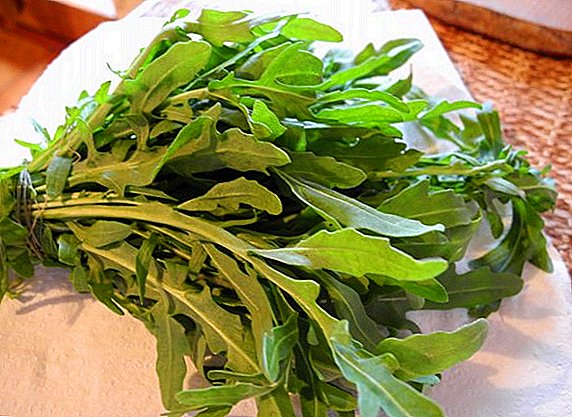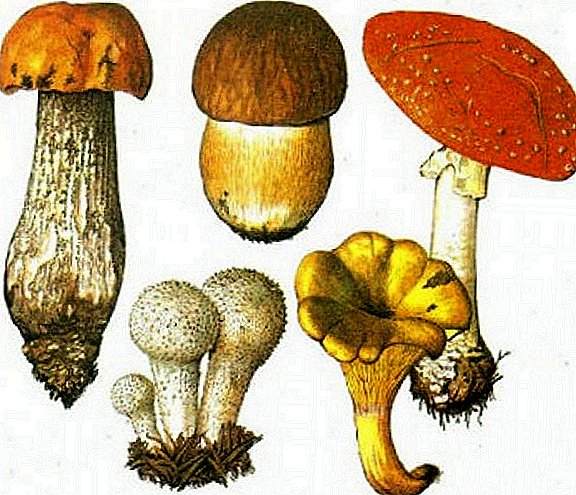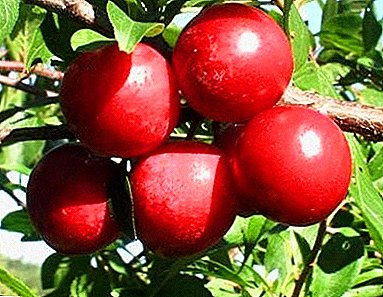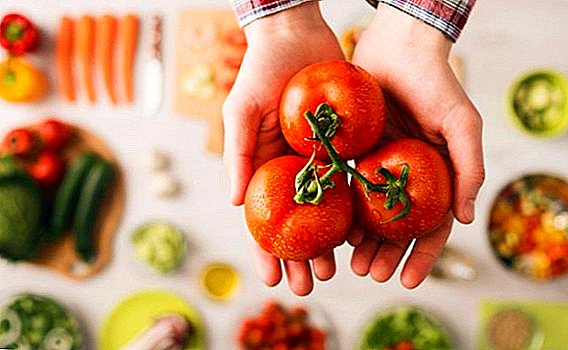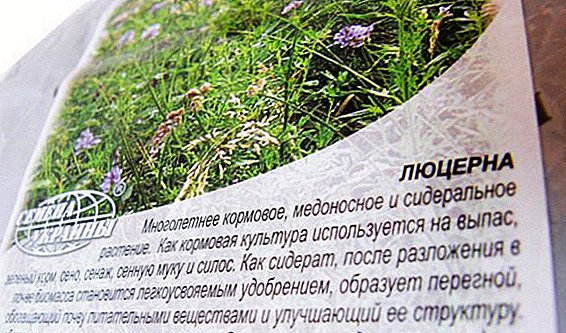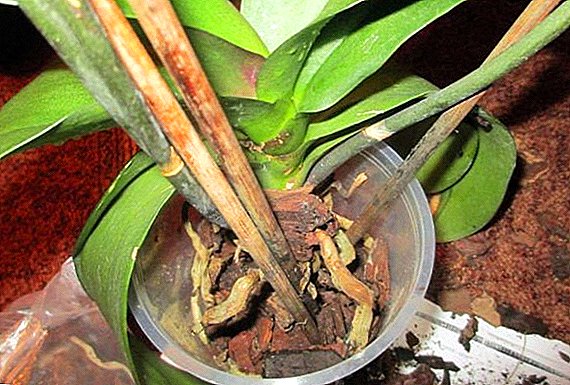 Liviston palm tree belongs to the palm or areca family. This evergreen beautiful plant, which is home to countries in Africa, East Asia, Australia and Oceania. Despite its tropical origin, this plant is very popular among our gardeners, and for good reason. The fanlike, spreading leaves of this ornamental plant perfectly complement and refresh any interior.
Liviston palm tree belongs to the palm or areca family. This evergreen beautiful plant, which is home to countries in Africa, East Asia, Australia and Oceania. Despite its tropical origin, this plant is very popular among our gardeners, and for good reason. The fanlike, spreading leaves of this ornamental plant perfectly complement and refresh any interior.
Among the other advantages of palm trees can be called its ability to effectively clean the air in the room.
Description
In the wild, the palm tree reaches 20-25 m in height, but the apartment grows to a maximum of 1.5-2 meters. It has spreading, up to 100 cm in diameter, fan-shaped leaves, the color of which varies from rich dark green to gray-green, glossy, cut into 3/4.
In nature, prefers wet, marshlands, forests, grows near water, near the sea. Distributed in Malaysia, New Guinea, Polynesia.  Differs unpretentiousness and rapid growth. If there is enough space in the room, the palm tree can grow solely due to new leaves, without increasing the trunk. Per year can produce up to three new leaves. Already at the age of three, the plant is a decorative ornament, for which it became popular with gardeners.
Differs unpretentiousness and rapid growth. If there is enough space in the room, the palm tree can grow solely due to new leaves, without increasing the trunk. Per year can produce up to three new leaves. Already at the age of three, the plant is a decorative ornament, for which it became popular with gardeners.
Palm owes its name to Lord of Livinstone, Patrick Murray, who was a noble lover of plants and enriched his garden with more than 1,000 species. In nature, there are about 36 species of Liviston palm trees, the most popular of which are southern, round-leaved, rotundifolia and Chinese.
Did you know? The familiar expression "palm championship" did not appear by chance. In the old days, the palm tree was considered a sacred tree, a symbol of peace and victory, and was equated with a laurel wreath. In ancient Greece, athletes who won the competition were awarded a date palm branch. No wonder even the goddess of victory, Nick, was depicted with such an attribute in her hands.
Growing up
Palm Liviston different unpretentiousness, good adaptive abilities, ease of care and relatively rapid growth. A tropical guest can be grown from seeds or purchased in a store, then we will look at both in detail. 
Learn more about how to grow hamedorea, date palm, yucca, hovey Foster, Belmore, cicas, chrysalidocarpus, pandanus, dracaena, pachipodium, cordilina at home.
Planting palm soil
That soil (peat substrate), in which plants are kept for sale, is not suitable for permanent use, because the newly acquired plant will need to be transplanted. Immediately after the purchase, you should not do this - maintain a quarantine for 2-3 weeks, so that the palm tree will acclimatize, get used to the microclimate and experience less stress when transplanting.
To plant in a permanent pot, prepare:
- soil for palm trees (sold in flower shops);
- pot (you can not take too large capacity for a miniature plant, take the capacity in size, with good holes for drainage);
- haydite, small stones or other drainage layer;
- potassium permanganate.
 Algorithm action:
Algorithm action:- First water the plant to soften the soil.
- Next, carefully remove it from the pot, place it in a container with water with the addition of potassium permanganate, so that the peat lumps are completely softened and disinfected.
- Clean the roots of the remnants of the earth.
- Prepare the soil: you can use the purchase of ready-made soil for palm trees or prepare yourself from equal parts of sand, compost and garden soil.
- Place large claydite with a layer of 4-5 cm on the bottom of the tank and fill in a little bit of soil.
- Next you need to gently spread the roots and begin to sprinkle them with earth. There should be at least 3 cm between the edge of the pot and the surface of the soil. There is no need to make recesses near the barrel.
Learn how to breed Hamedorei, date palm, yucca, dracaena.
How to grow from seed
To implement this method you need to prepare:
- plant seeds;
- small tanks with drainage holes;
- plastic wrap;
- priming.
 Seeds are suitable for planting within a year after harvest. It is best to land at the end of winter and early spring. In order to speed up seedlings, you first need to undergo scarification procedure — destruction of the seed shell by the body for quick access to the embryo. This can be done by mechanical (hard object), thermal (when freezing and scalding with boiling water), chemical (soaking the seed in acid solution) ways. Next, the seeds need to soak for 48 hours in warm water.
Seeds are suitable for planting within a year after harvest. It is best to land at the end of winter and early spring. In order to speed up seedlings, you first need to undergo scarification procedure — destruction of the seed shell by the body for quick access to the embryo. This can be done by mechanical (hard object), thermal (when freezing and scalding with boiling water), chemical (soaking the seed in acid solution) ways. Next, the seeds need to soak for 48 hours in warm water.Learn more about seedbed treatment methods - scarification and stratification.To prepare the soil in equal parts, mix perlite, vermiculite and leaf earth. The soil temperature should be warm, up to + 30 ° C, it is necessary to moisten the soil abundantly. The containers should be filled so that the top edge is 1.5 cm. After soaking, press the seeds 1 cm into the ground, cover with film and place in a place with a sufficient amount of light. Within 1-4 months, shoots will appear. The film needs to be removed daily and the tanks should be aired for an hour.
Important! We can not allow the soil to dry out during the period of seed growth! It is also very important not to overdo it with moisture, otherwise the seeds will rot.
 It is possible to replant the plant into a permanent container when the seedling reaches 2-4 cm. When transplanting, it is necessary to handle the roots as carefully as possible, leaving the whole earth on them. The plant is accustomed to the greenhouse conditions under the film, because dramatically remove it is not worth it. It is necessary to increase the time without shelter every day: for 2 hours, then for 3 hours, bringing up to a day.
It is possible to replant the plant into a permanent container when the seedling reaches 2-4 cm. When transplanting, it is necessary to handle the roots as carefully as possible, leaving the whole earth on them. The plant is accustomed to the greenhouse conditions under the film, because dramatically remove it is not worth it. It is necessary to increase the time without shelter every day: for 2 hours, then for 3 hours, bringing up to a day.Care
Tropical plant care includes the following aspects:
- Lighting. Palm Liviston loves a lot of light, because it needs to provide the most illuminated place in the house. If at lunch on the sun direct sun rays fall, it is advisable to plant the plant. To evenly form the crown, periodically rotate the palm tree.

- Temperature. In summer, the plant can be kept outside. In winter, the temperature should not fall below + 8 ° C, it is optimal to maintain the temperature at around + 15 ° C.
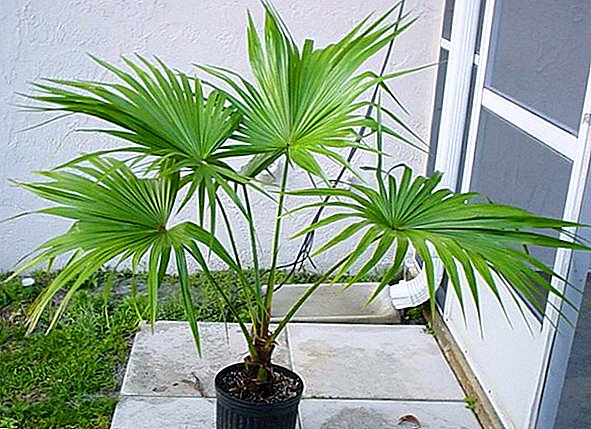
- Watering and moisturizing. For normal growth is very important soil moisture and air. Watering should be regular and moderate. With an insufficient amount of moisture, the leaves dry, and if it is excessive, the roots rot. Therefore, it is best to place the plant on a pallet. It is necessary to water with warm, filtered water. If water has accumulated on the pallet, some time after watering, the water must be drained. Moisten the air you need from the spray. You can also wipe the leaves with a damp sponge.
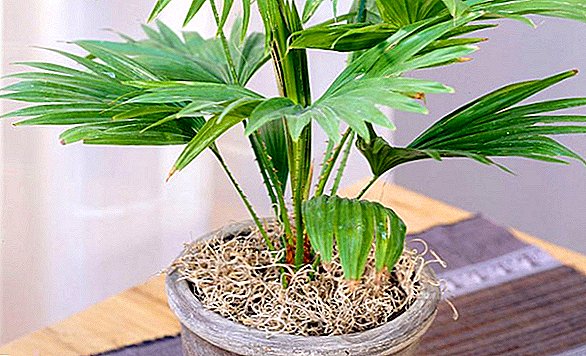
- Crop. Liviston's palm has one unusual feature - the tips of its leaves are always dry and yellow. This is the normal state of the plant, even with proper care. Due to ignorance of this feature, inexperienced flower growers begin to cut off dry tips, which aggravates the situation. The tips do not need to trim. It is only necessary to cut off completely dry leaves and only after the cutting has dried.
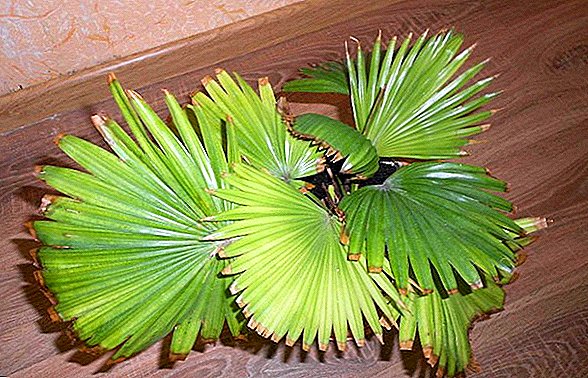
- Top dressing. In the spring and summer months, top dressing is carried out 3-4 times a month. To feed the plants, you can apply fertilizers to palm trees. It is also important, especially in winter, to add foliar dressing. It is important to remember that it is necessary to conduct root and foliar feeding at different times! Palm Liviston responds well to complex mineral fertilizers, for example, "Mr. color. Palm". Means can be brought both to the soil, and sprayed. The proportion is as follows: 1 liter of water requires 1 cap of mineral liquid, in winter the concentration is reduced by 2 times (2 l of water and 1 cap of fertilizers). For external use, the concentration will be even lower: 1 cap for 3 liters of water. You can use tools from other manufacturers ("Loren", "Pokon"), designed for palm trees. Apply them according to the instructions.

- Wintering. In the cold season, Liviston's palm should be placed in the most light place in the house, temperature should be within + 15-16 ° С, watering should be reduced to 1 time per week, and the number of dressings should be reduced to 1 time per month. It is important to regularly air the room with the plant.

- Cleaning the plant. Every month, the leaves of the home beauty should be thoroughly wiped (washed) with a damp sponge. It is especially important to keep the bottom of the leaves clean.

Important! The plant should have enough space: if the leaves rest against a wall, window, or other objects, their growth may slow down or stop completely.
Transfer
Unlike many indoor plants, Liviston's palm needs a transplant every few years. It is optimal to determine the need for a procedure according to the size of the root system: if the roots have grown all over the pot, there is not enough space for them, they will begin to be seen through the ground or drainage holes - a more spacious “housing” needs to be provided to the room pet. By the time it is optimal to carry out transplantation in early spring.
The soil for transplantation is prepared from the following components:
- leaf earth - 2 parts;
- sod land - 2 parts;
- peat - 1 part;
- rotted manure - 1 part;
- sand - 1 part;
- handful of charcoal.
 After preparing the soil, you can proceed to the transplant procedure:
After preparing the soil, you can proceed to the transplant procedure: - The plant must be carefully removed with a scapula, trying to leave the ground on the roots.
- Rotten roots need to be removed.
- Slices should be treated with garden pitch, the remaining roots, if possible, do not touch.
- As a new pot choose deep capacity, which will comfortably accommodate fleshy, powerful roots of the plant. Make a quality drainage at the bottom of the pot of 3-4 cm expanded clay or broken clay.
- Pour in a little bit of earth to cover the drainage, carefully place the roots in rings, sprinkle with earth and pack a little.
- After planting, the plant must be moistened.
Important! Make sure that the ground level on the trunk of the plant matches in the new pot.

Breeding methods
Due to the fact that the palm tree grows with one trunk, there is no vegetative propagation method. Therefore, propagate this plant seeds. But it still happens that lateral processes are formed on protruding roots. Then you can try to propagate the palm tree with offspring, although this is a rather rare and not the most successful method.
Find out what plants are recommended for offices, nurseries, bedrooms, balconies.Sometimes it happens that after buying in one pot you can find several young trunks, then it makes sense to plant them in different containers. How to arrange seating:
- Undermine the ground and remove the trunks with roots.
- Cut the roots in no case! They need to be very carefully separated with your fingers, trying not to disturb the earth around them.
- Damaged roots need to grease the garden pitch.
- Place the plants in the wells, do not deepen.
- Sprinkle with soil and moisten.
 To grow a tropical beauty from seed, you can follow the method described above. You can buy seeds online or in large stores for the garden. It is very important that when storing seeds the temperature is kept below + 15 ° C, otherwise the seeds will lose viability, and your money and time will be wasted.
To grow a tropical beauty from seed, you can follow the method described above. You can buy seeds online or in large stores for the garden. It is very important that when storing seeds the temperature is kept below + 15 ° C, otherwise the seeds will lose viability, and your money and time will be wasted.Although manufacturers indicate that the shelf life of seeds is several years, it is still better to get the most fresh material. The longer the seeds have been stored, the longer the growing period will be.
Seeds must be whole, without damage, with a germ inside, the color of which varies from white to yellow. The color of the seed shell itself will be different for each subspecies of livistons, from light beige to brown.
Did you know? In the 60s of the last century, during excavations of the palace of Judah’s King Herod, archaeologists discovered date palm seeds that were over 2,000 years old. After another 50 years, in 2005, scientists tried to grow trees from them. After careful preparatory procedures, one sprout of three seeds appeared, which he named Methuselah. Today, the palm tree has grown to 2 meters!

Diseases and pests
Many diseases in Liviston's palm tree are caused by improper care. Symptoms and methods of dealing with the most common illnesses:
- Shchitovka. Manifested by brown plaques on the leaves, which increase in size, dry and deplete the leaf. Gradually the foliage turns yellow, curls, and the plant dies. Prevention measures include regular airing of the room, humidification of the air and foliage inspection. If you find pests on your green pets, carefully examine all the plants in the house and isolate the infected ones. Using a cotton pad moistened with soapy water, eliminate insects, then treat the bushes with insecticide according to the instructions: "Aktellik", "Phosbecid", "Aktara".

- Spider mite It is a rather insidious pest: besides the fact that the tick feeds on plant sap, it is also a carrier of dangerous infections. In addition, the fight against this pest is very long and laborious. A tick can be identified by the presence of white small dots on the underside of leaves, a fine web and clusters of tick populations. In order to prevent the need to maintain the necessary humidity. If the plant is affected by a pest, even a pot, saucer and window sill will need to be processed. You can use such drugs-acaricides: Apollo, Borneo, Akarin, Fitoverm.

- Mealybugs The popular name for pests is shaggy lice. The main signs of damage include: white vatoobrazny plaque, sticky discharge with the further appearance of soot fungus. For the prevention of the disease it is impossible to prevent the plants from drying out; you need to regularly inspect the room pet, wipe the leaves and keep them clean. If you are affected by mealybugs, use the following drugs: Aktara, Konfidor, Tanrek. Before spraying, you need to manually remove the worm with a cotton pad dipped in soapy water.
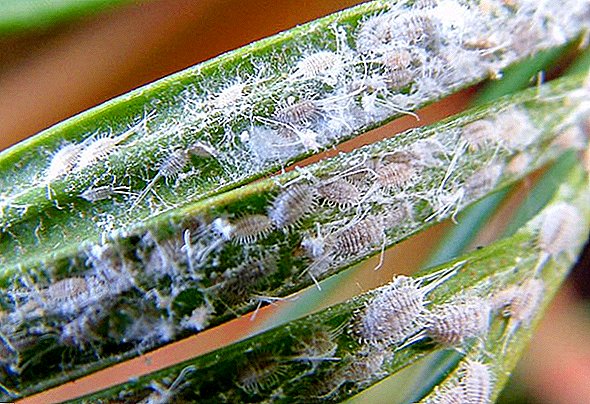
- Slow leaf growth, stunted growth. The reason may be a lack of light and too low a temperature. It should be borne in mind that when the temperature drops to + 18 ° C, growth slows down.
- Chlorosis (yellowing) of leaves. The cause may be a violation of the acid-base balance. It is necessary to correct the pH of the soil, make foliar feeding.
- Coloring the tips in brown. From dressings should eliminate mixtures containing fluorine.
- Spots of yellow and brown, curling leaves. Caused by excessive lighting or insufficient watering.
Learn how to deal with diseases and pests of palm trees, date, dracaena, yucca, hovey.
The appearance of Liviston's palm is able to revive and add exotic notes to any interior, adjust the indoor climate, and revive it. If you have the opportunity to provide enough space for this resident of tropical countries, he will long be pleased with his extraordinary beauty!












